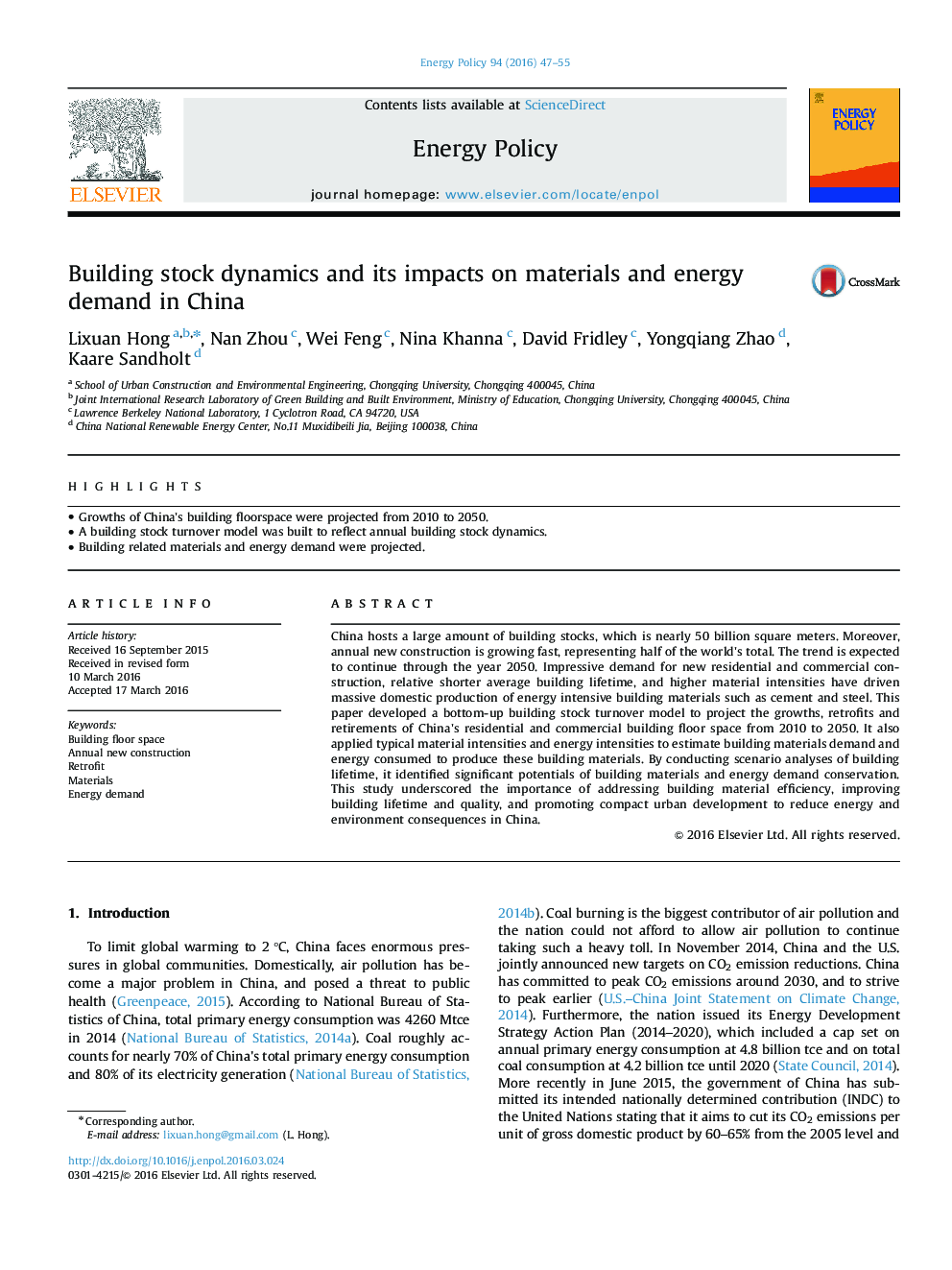| کد مقاله | کد نشریه | سال انتشار | مقاله انگلیسی | نسخه تمام متن |
|---|---|---|---|---|
| 7399193 | 1481264 | 2016 | 9 صفحه PDF | دانلود رایگان |
عنوان انگلیسی مقاله ISI
Building stock dynamics and its impacts on materials and energy demand in China
ترجمه فارسی عنوان
پویایی سهام ساختمان و تاثیرات آن بر مواد و تقاضای انرژی در چین
دانلود مقاله + سفارش ترجمه
دانلود مقاله ISI انگلیسی
رایگان برای ایرانیان
کلمات کلیدی
فضای ساختمان ساخت سالانه جدید، بازسازی مواد، تقاضای انرژی،
ترجمه چکیده
چین میزبان مقدار زیادی از سهام ساختمان، که تقریبا 50 میلیارد متر مربع است. علاوه بر این، ساخت و ساز سالانه جدید به سرعت در حال رشد است، که نیمی از کل جهان را تشکیل می دهد. انتظار می رود این روند طی سال 2050 ادامه یابد. تقاضای چشمگیر برای ساخت و ساز جدید مسکونی و تجاری، عمر نسبی کوتاه تر ساختمانی و شدت مواد بیشتر باعث تولید داخلی سنگین مواد سنگین مانند سیمان و فولاد شده است. این مقاله یک مدل بازده سهام ساختمانی پایین به بالا برای ایجاد رشد، بازسازی و تکمیل فضای ساختمان های مسکونی و تجاری چین در سال های 2010 تا 2050 را توسعه داد. همچنین میزان شدت مواد و شدت انرژی مورد نیاز برای برآورد تقاضای مواد مصالح ساختمانی و مصرف انرژی این مواد ساختمانی را تولید می کنند. با انجام تجزیه و تحلیل سناریوهای عمر ساختمان، پتانسیل قابل توجهی از مواد ساختمانی و حفاظت تقاضای انرژی را تعیین کرد. این مطالعه بر اهمیت پرداختن به کارآیی مصالح ساختمانی، بهبود عمر ساختمان و کیفیت ساختمان و توسعه شهرک سازی جمع و جور برای کاهش پیامدهای انرژی و محیطی در چین تأکید کرد.
موضوعات مرتبط
مهندسی و علوم پایه
مهندسی انرژی
مهندسی انرژی و فناوری های برق
چکیده انگلیسی
China hosts a large amount of building stocks, which is nearly 50 billion square meters. Moreover, annual new construction is growing fast, representing half of the world's total. The trend is expected to continue through the year 2050. Impressive demand for new residential and commercial construction, relative shorter average building lifetime, and higher material intensities have driven massive domestic production of energy intensive building materials such as cement and steel. This paper developed a bottom-up building stock turnover model to project the growths, retrofits and retirements of China's residential and commercial building floor space from 2010 to 2050. It also applied typical material intensities and energy intensities to estimate building materials demand and energy consumed to produce these building materials. By conducting scenario analyses of building lifetime, it identified significant potentials of building materials and energy demand conservation. This study underscored the importance of addressing building material efficiency, improving building lifetime and quality, and promoting compact urban development to reduce energy and environment consequences in China.
ناشر
Database: Elsevier - ScienceDirect (ساینس دایرکت)
Journal: Energy Policy - Volume 94, July 2016, Pages 47-55
Journal: Energy Policy - Volume 94, July 2016, Pages 47-55
نویسندگان
Lixuan Hong, Nan Zhou, Wei Feng, Nina Khanna, David Fridley, Yongqiang Zhao, Kaare Sandholt,
